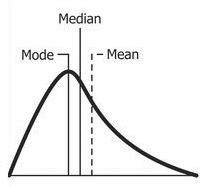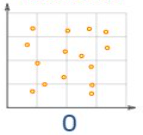Getting useful info about a student during a parent/teacher conference is this kind of assessment
Interview
A teacher makes a test to assess the students on what she taught them that week. Everything on the test was covered in class. What kind of test is it?
Curriculum-based measure
T/F Most teacher-made tests are norm-referenced.
False
Educational measurements contain a margin of error.
True
If a test measures what it's supposed to measure, we say it is _____.
Valid
The mean score of a standard IQ test
100
Analyzing past grades and test scores on file is this kind of assessment
Record review
Norm-referenced test
The PRAXIS tests have a cut score or passing score. Applicants have to pass the test(s) to show proficiency to get a license. Is this a norm-referenced or criterion-referenced test?
Criterion-referenced
These scales describe attributes (i.e., gender, race, educational classification). They cannot be ranked and are sometimes called discrete or categorical variables.
Nominal scales
Ms. Jones wants to know how well her students can locate the states on a U.S. map. She gives them a blank map and has students label the states. Is this a low-inference or high-inference assessment?
Low-inference
A student scored at the 60th percentile on a standard IQ test. What does this tell you?
The student scored higher than 60% of individuals of the same age on the IQ test. (This is in the average range.)
Teacher-made quizzes and SOLs are this kind of assessment.
Testing
In this kind test, a student's performance is measured against some standard. For example, Virginia's SOL tests measure student proficiency relative to Virginia's Standards of Learning (SOLs). Students must score 400 or better to pass the test.
Criterion-referenced test
Two examples of useful information teachers can gain by having someone observe their classroom using an anecdotal seating chart
Examples of possible answers could be things like:
Collecting specific data on student behaviors (i.e., on-task/off-task behaviors, hands up)
Collecting specific data on teaching practice (i.e., questioning practices, who the teacher calls on, frequency of positive reinforcement)
These scales order values from worse to better, but the difference between values is unknown or unequal (i.e., A, B, C, D, F; exemplary, proficient, developing, unacceptable).
Ordinal scales
If a test gets the same results even if different teachers proctor and grade it, we say that it is _____.
Reliable
The mean subscale score on a standard IQ test
10
Having a colleague document a student's time on and off task during a class period is this kind of assessment.
Systematic observation
Pre-assessments are given at the beginning of a course or unit to determine the student's prior knowledge and what the teacher should teach next. They should not be graded. They are also called what?
Diagnostic assessments
What does this graph tell us about students' performance on the assessment?

The mean is positively skewed, so more students scored lower on the test than the mean.
What does it mean?
These scales have an absolute and logical zero and the difference between values is known and equal (i.e., length, area, population, weight).
Ratio scales
High-inference
How could you improve that assessment?
What disability category would we suspect if a student scores more than two standard deviations below the mean on a standard IQ test?
ID (But of course, we can't make decisions based solely on one test.)
Interview
These are often used in EXED to monitor an individual student's progress and behavior each day.
Daily scorecard
What does this graph tell you about the correlation between the two variables?

There is no correlation between the two variables.
Ratio scales that do NOT have an absolute or logical zero, and the difference between the values is known and equal (i.e., IQ tests, most classroom tests)
Interval scales
50th percentile
(What does this mean?)
Which indicates above-average performance on a standard IQ test--a standard score of 87 or scoring on the 87th percentile?
Scoring on the 85th percentile